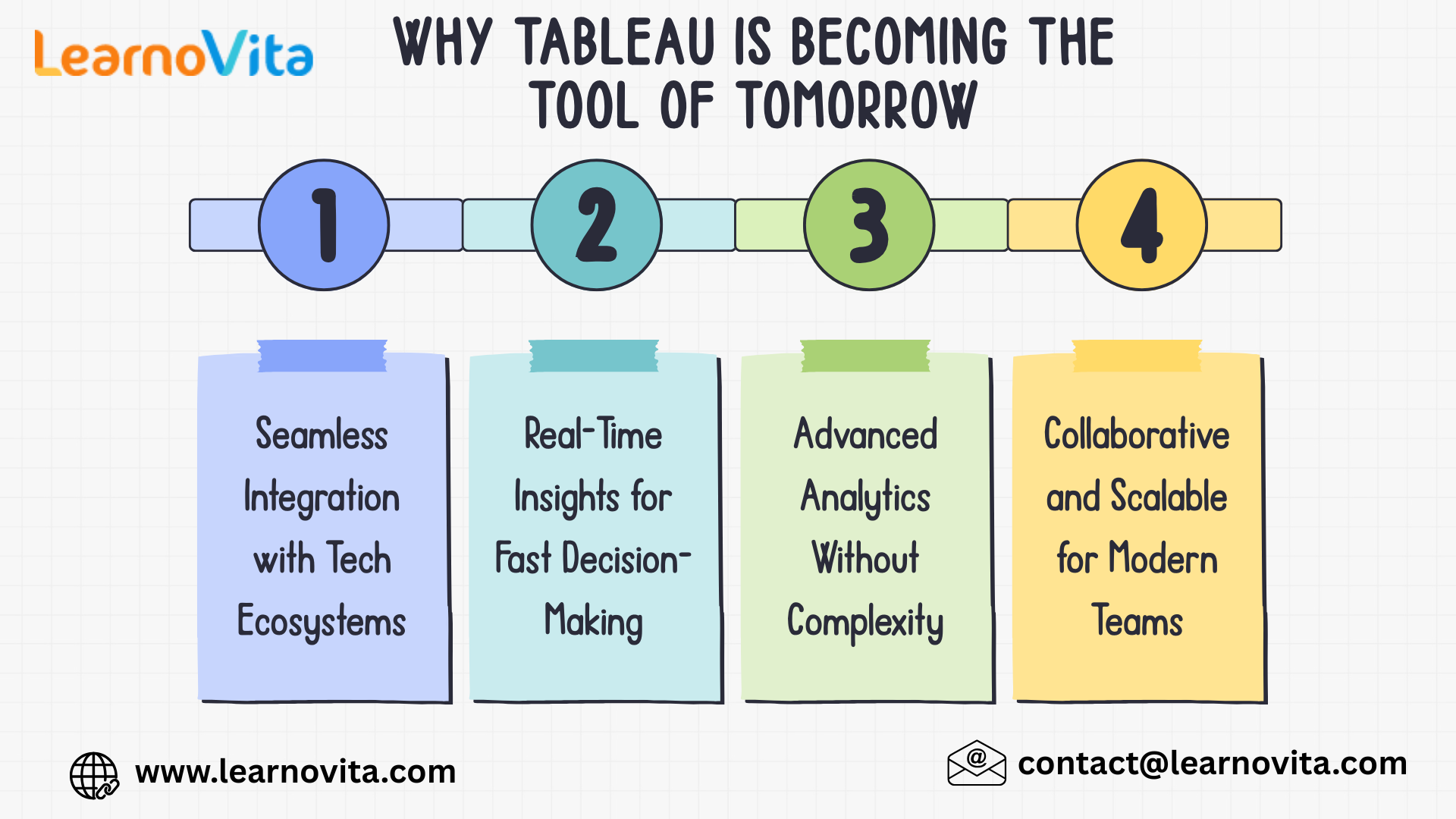Transforming Tech Workflows: Tableau as the Future of Data Visualization

In today’s fast-changing tech world, data has become the backbone of every decision, strategy, and innovation. But the challenge isn’t collecting data it’s making sense of it. Tech professionals need tools that can keep up with the speed and scale of modern systems, and Tableau Online Course has emerged as one of the most powerful solutions for bringing clarity to complex information. Its intuitive design and strong analytical capabilities make it a standout choice for the future of data visualization.
Turning Raw Data Into Meaningful Insight
Tech environments generate data from countless sources applications, cloud services, networks, and user interactions. Without the right visualization tool, this information can quickly become overwhelming. Tableau simplifies the process by turning large datasets into clean, interactive dashboards that highlight insights instantly. Its drag-and-drop interface allows users to build visualizations without heavy coding, empowering even non-analysts to explore data independently. For tech professionals balancing multiple tasks and tight deadlines, this ease of use is a major advantage.
Why Tableau Is Poised to Lead the Future
1. Works Perfectly in Diverse Tech Ecosystems
Organizations today rely on a mix of cloud platforms, databases, APIs, and real-time data streams. Tableau connects to nearly all of them AWS, Azure, Google Cloud, Snowflake, SQL databases, and more. This flexibility ensures that as the tech stack evolves, Tableau remains a constant, reliable analytics partner.
2. Supports Real-Time Decision-Making
In technology, every second counts. Tableau’s real-time capabilities help teams monitor performance, spot anomalies, and troubleshoot issues instantly. This makes it especially valuable for DevOps, engineering, and IT operations, where quick responses can prevent downtime and optimize performance.
3. Unlocks Advanced Analytics for Everyone
Tableau brings powerful analytical features forecasting, trend analysis, clustering, and AI-driven insights directly into its interface. With features like Tableau Pulse, users can dig deeper into data without needing expert-level statistical knowledge. This Software Training Institute democratization of analytics helps tech teams move faster and make smarter decisions.

4. Built for Collaboration and Scalability
Tech work thrives on collaboration, and Tableau supports that seamlessly. Dashboards can be shared through Tableau Cloud or Tableau Server, ensuring teams work from the same source of truth. Its ability to scale across departments and within growing organizations makes it a future-ready solution for companies of any size.
Empowering Tech Roles Across the Industry
From product teams analyzing user behavior to network engineers tracking uptime, Tableau supports nearly every tech function. It reduces manual reporting, increases visibility, and encourages a data-first mindset across the organization. For professionals aiming to stay ahead in their careers, Tableau becomes not just a tool but a competitive advantage.
Conclusion
As data becomes more central to innovation, tech professionals need visualization platforms that are fast, flexible, and intelligent. Tableau stands out as the visualization tool of tomorrow, offering the power and simplicity needed to turn information into action. For anyone looking to excel in a data-driven industry, mastering Tableau is a forward-looking step toward future success.
- Questions and Answers
- Opinion
- Motivational and Inspiring Story
- Technology
- Live and Let live
- Focus
- Geopolitics
- Military-Arms/Equipment
- Security
- Economy
- Beasts of Nations
- Machine Tools-The “Mother Industry”
- Art
- Causes
- Crafts
- Dance
- Drinks
- Film/Movie
- Fitness
- Food
- Games
- Gardening
- Health
- Home
- Literature
- Music
- Networking
- Other
- Party
- Religion
- Shopping
- Sports
- Theater
- Health and Wellness
- News
- Culture

